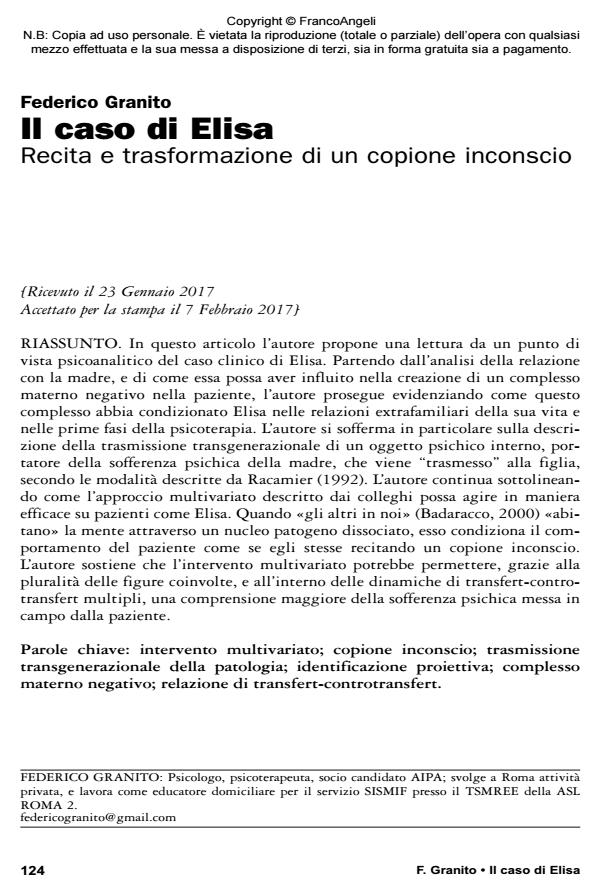Elisa’s case. states and transformation of an unconscious script
Journal title PSICOBIETTIVO
Author/s Federico Granito
Publishing Year 2017 Issue 2017/1
Language Italian Pages 5 P. 124-128 File size 684 KB
DOI 10.3280/PSOB2017-001009
DOI is like a bar code for intellectual property: to have more infomation
click here
Below, you can see the article first page
If you want to buy this article in PDF format, you can do it, following the instructions to buy download credits

FrancoAngeli is member of Publishers International Linking Association, Inc (PILA), a not-for-profit association which run the CrossRef service enabling links to and from online scholarly content.
In this article, the author proposes a lecture from a psychoanalytical view of Elisa’s clinical case. Beginning from the relationship with the mother, and how this may have influenced in the creation of a negative motherhood complex in the patient, the author then proceeds highlighting how this complex influenced Elisa in her extra-familial relations during her life and through the first phases of psychotherapy. The author dwells in particular on the description of the transgenerational transmission of an internal psychic object, the bearer of psychic pain of the mother, which is "transmitted" to his daughter, as described by Racamier mode (1992). The author goes on to underline how the multivariate appro- ach described by colleagues can act effectively on patients like Elisa. When "the other in us" (Badaracco, 2000) "inhabit" the mind through a pathogenic core dissociated, it affects the patient’s behavior as if he were reciting an unconscious script. The author argues that the multivariate intervention could allow, thanks to the plurality of the figures involved and within the transference/counter-transference multiple dynamics, a greater understanding of mental suffering fielded by the patient.
Keywords: Multivariate Intervention; Unconscious Script; transgenerational transmission of disease; projective identification; negative motherhood complex; transference/counter-transference relation.
Federico Granito, Il caso di Elisa. Recita e trasformazione di un copione inconscio in "PSICOBIETTIVO" 1/2017, pp 124-128, DOI: 10.3280/PSOB2017-001009